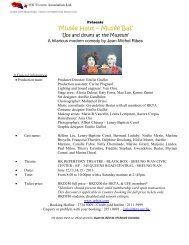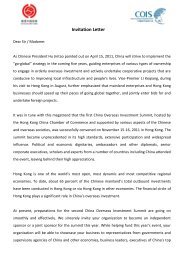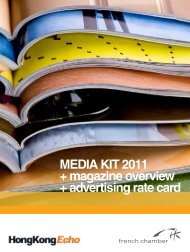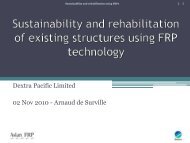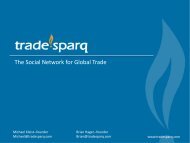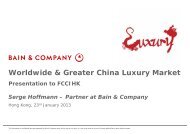You also want an ePaper? Increase the reach of your titles
YUMPU automatically turns print PDFs into web optimized ePapers that Google loves.
TMT<br />
<strong>Memory</strong> Devices Technology<br />
8 October 2010<br />
abc<br />
Short-term oversupply<br />
After a series of years of declining revenue<br />
growth, we estimate global DRAM revenue to rise<br />
79% y-o-y this year, driven by 49% bit growth<br />
and blended ASP rise of c20%. For 2011, the<br />
situation is clearly different; we forecast global<br />
revenue to be flat (+1% y-o-y) as blended ASPs<br />
decline 32% y-o-y to below USD1.9, offsetting<br />
the c49% rise in bit supply. Over the next 2-3<br />
quarters we expect the DRAM industry to suffer<br />
from pricing pressure on greater supply as smaller<br />
players overcome process migration difficulties<br />
and as larger players accelerate their own process<br />
migrations, plus in the case of Samsung, adds<br />
wafer capacity. Nevertheless, we forecast DRAM<br />
industry revenue to reach cUSD46bn by 2012e,<br />
almost doubling from last year’s cUSD24bn.<br />
DRAM revenue, supply bit growth, ASP trends<br />
60,000<br />
50,000<br />
40,000<br />
30,000<br />
20,000<br />
10,000<br />
-<br />
Source: IDC, HSBC estimates<br />
2008 2009 2010f 2011f 2012f<br />
Supply (1Gb, m)<br />
DRAM Sales (USDm)<br />
Blended ASP, 1Gb equ. (USD)<br />
Oversupply likely until 2Q11<br />
3.0<br />
2.5<br />
2.0<br />
1.5<br />
1.0<br />
0.5<br />
-<br />
We forecast supply to continue outstripping; we<br />
estimate supply-demand sufficiency last year was<br />
c99.9%, and expect it to remain relatively tight<br />
until 4Q10, when surging supply is set to<br />
unbalance the market. Next year, we think<br />
oversupply could persist through 2Q11, with a<br />
more balanced supply returning in 2H11.<br />
DRAM supply-demand balance<br />
40,000<br />
30,000<br />
20,000<br />
10,000<br />
-<br />
Source: HSBC forecasts<br />
2008 2009 2010f 2011f 2012f<br />
106<br />
104<br />
102<br />
100<br />
Supply (1Gb, m) Supply -demand ratio (%)<br />
We expect DDR3 average contract prices to fall<br />
18% q-o-q in 4Q10 respectively. This appears<br />
realistic; in 3Q10 average contract prices for<br />
DDR3 and DDR2 have retreated 13% q-o-q,<br />
versus our forecast of 15%. This level of price<br />
erosion is well above Samsung and Hynix’s 3Q10<br />
guidance of blended ASP decline in high single<br />
digits, and a ‘slight’ fall respectively (though the<br />
two firm’s ASP guidance is for blended, not for<br />
commodity DRAM).<br />
DDR2 contract and spot price (USD)<br />
3.5<br />
3.0<br />
2.5<br />
2.0<br />
1.5<br />
1.0<br />
0.5<br />
Jan-08 Jul-08 Jan-09 Jul-09 Jan-10 Jul-10<br />
1Gb DDR2 128Mx 8 667 Mhz contract<br />
1Gb DDR2 128Mx 8 667 Mhz spot<br />
Source: DRAMeXchange<br />
DDR3 enjoyed a 7-15% premium through much<br />
of 9M10, despite DDR2/3 production cross-over<br />
during 1-2Q10 due to strong demand for newer,<br />
faster memory by PC OEMs. However, in<br />
September, the premium narrowed to just 3% as<br />
more vendors ramp up on DDR3.<br />
98<br />
96<br />
94<br />
42



